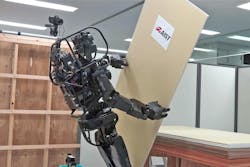Housing's Incremental Innovation Path
Claims that the U.S. housing industry is not innovative are, in a word, crap. Or, at best, misguided. And that’s coming from someone who has, through these pages and other channels, championed innovation as a necessary element of operational improvement and business sustainability for builders.
A more valid, if also arguable, criticism is whether innovation is occurring fast enough in our industry. No doubt, there have been significant barriers for disrupters in other industries, but they still moved much faster to innovate—Tesla fighting upstream against an entrenched auto industry infrastructure to bring electric cars into the mainstream being perhaps the best parallel to housing.
But I would counter that even Tesla’s journey can’t fully compare to the roadblocks hindering the adoption of Innovation in housing, especially on the production side: Our industry is far more fragmented, a collection of tens of thousands, mostly small, local operations relying on low-tech materials and manual labor. At least in the auto industry, robotics and computer-aided design were well-established production technologies long before Tesla entered the scene—one with two handfuls of players all operating under strict federal standards and enforcement, not the luxury of state and local variations to a national code that builders enjoy.
RELATED
- 3 Home Building Innovations You Have to See
- 2022 Housing Forecast: Opportunities and Challenges
- Vaughan Buckley on Restarting a Former Katerra Factory
But none of that means we aren’t innovating, in our own way and at our own pace. Where were we before drywall, plywood and OSB, rigid foam insulation, and three-tab composition roof shingles came along to hasten production and improve performance? Before pneumatic nail guns, cordless power tools, and blown-in or spray-applied insulation?
And now—still slowly but far more surely than before—we are witnessing real growth in panelized and modular construction as legit production alternatives to help combat costly and chronic labor shortages and materials waste. Set aside the production argument, and housing certainly has raised its game in marketing and sales and, to a slightly lesser extent, with advances in operational technologies, such as financing and land assessment.
I would counter that even Tesla’s journey can’t fully compare to the roadblocks hindering the adoption of Innovation in housing, especially on the production side.
What housing lacks, really, is a widespread commitment to true innovation, along the lines of what Ivory Homes, our 2021 Builder of the Year, has done by creating a separate division devoted to seeking out and integrating all sorts of innovation across its operation—an anomaly in this industry, at least.
So yes, for that reason and others endemic to our legacy culture, housing lags most other industries when it comes to production and other innovations; we know that, thanks. But maybe change isn’t as easy as it was with taxicabs, hotel rooms, and razor blades. We’ll get there. Just give us time.

